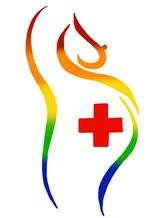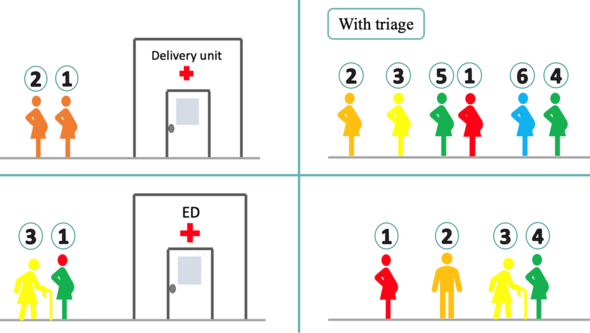- Home
- Research
- Find research
- Linnéa Lindroos: New approach in emergency care for pregnant women
Linnéa Lindroos: New approach in emergency care for pregnant women
She led the development of Sweden’s first obstetric triage system. Now, Linnéa Lindroos presents her doctoral thesis, demonstrating the success of the Gothenburg Obstetric Triage System (GOTS). This system offers crucial support to midwives and nurses when assessing pregnant or recently delivered women seeking emergency medical care.

LINNÉA LINDROOS
Dissertation Defense: November 24, 2023 (click for details)
Doctoral Thesis: Obstetric Emergency Triage - A new mindset in obstetric emergency care in Sweden
Research Area: Obstetrics and Gynecology
Sahlgrenska Academy, The Institute of Clinical Science
Linnéa Lindroos is an obstetrician at Sahlgrenska University Hospital in Gothenburg. She works in labor and delivery units and in the emergency department for pregnant and postpartum women.
“In 2016, we initiated a comprehensive quality improvement project on patient safety for pregnant and recently delivered women seeking emergency medical care, not related to childbirth. We felt that we weren’t caring for them well enough. We found that, both in Sweden and internationally, there were major deficiencies in the initial assessment of obstetric patients seeking emergency care,” says Linnéa Lindroos.

Thought it wouldn’t turn into research
During this project, the Gothenburg Obstetric Triage System (GOTS) was created to prioritize pregnant and recently delivered women seeking emergency services based on the urgency of care needed. Prior to this initiative, Sweden lacked a dedicated triage system for this specific patient group.
“I led the development of GOTS, and it was natural for me to want to determine whether what we had developed was effective. Initially, I hadn’t considered it as a formal research project, but more as quality assurance,” says Linnéa Lindroos.
She continues, “But Verena Sengpiel, who became my main supervisor, suggested that we should expand the evaluation and turn it into a doctoral project. For me, it felt right to have a research project so closely tied to clinical work.”
Potential to reduce mortality
What are your most significant research findings?
“The most important findings are that we’ve developed a system that works well and provides support to the triaging midwife or nurse when assessing a pregnant or postpartum patient. We’ve also seen that the staff appreciates it, leading to less stress and better communication in obstetric emergency departments.”
What further benefits can this research offer?
“In the long run, we could contribute to reducing morbidity and mortality among pregnant and postpartum women. However, a thorough evaluation of the system is necessary. What works in one context might not necessarily work in another.”
Why did you decide to engage in research?
“It is gratifying to be able to develop something that helps both patients and healthcare professionals. During our basic training, we learn how to excel in individual patient encounters. But research focuses more on the bigger picture. For me, it’s about creating the best possible conditions for each individual patient encounter. Additionally, it’s a privilege to continue learning and add new perspectives to my existing knowledge.”

“Completely new in Sweden”
What has been challenging about your doctoral project?
“At times, I’ve struggled to find a platform for my research. The subject matter is entirely new in Sweden, and I’ve often found myself situated between two medical areas. In emergency care, there’s a fear of making mistakes with pregnant patients, and they’re often referred to obstetric units,” says Linnéa Lindroos.
“In obstetrics, emergency triage is an entirely new mindset. Obstetrics can be highly urgent, but this usually concerns patients who are close to giving birth. When other patients previously sought care, they were handled based on their arrival time, unless they were clearly very ill. Emergency care as seen in an emergency department didn’t exist within obstetrics until now.”
